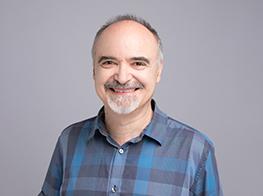师资
Quantum Topology and Hyperbolic Geometry in Da Nang, Vietnam May 27-31, 2019
Research lnterests:
My research interests are in low (i.e. 3 and 4) dimensional topology, the Jones polynomial, hyperbolic geometry, mathematical physics, Chern-Simons theory, string theory, M-theory, enumerative combinatorics, enumerative algebraic geometry, number theory, quantum topology, asymptotic analysis, numerical analysis, integrable systems, motivic cohomology, K-theory, Galois theory, deformation and geometric quantization.
In my early career, I got interested in TQFT (topological quantum field theory) invariants of knotted 3-dimensional objects, such as knots, braids, srting-links or 3-manifolds.
Later on, I became interested in finite type invariants (a code name for perturbative quantum field theory invariants of knotted objects). I studied their axiomatic properties, and related the various definitions to each other. A side project was to study the various filtrations of the mapping class groups, and to explicitly construct cocycles, using finite type invariants.
More recently, I have been studying the colored Jones polynomials of a knot, and its limiting geometry and topology. The colored Jones polynomials is not a single polynomial, but a sequence of them, which is known to satisfy a linear q-difference equation. Writing the equation into an operator form, and setting q=1, conjecturally recovers the A-polynomial. The latter parametrizes out the moduli space of SL(2,C) representation of the knot complement.
Another relation between the colored Jones polynomial and SL(2,C) (ie, hyperbolic) geometry is the Volume Conjecture that relates evaluations of the colored Jones polynomial to the volume of a knot. This and related conjectures fall into the problem of proving the existence of asymptotic expansions of combinatorial invariants of knotted objects. Most recently, I am working on resurgence of formal power series of knotted objects. Resuregence is a key property which (together the nonvanishing of some Stokes constant) implies the Volume Conjecture. Resurgence is intimately related to Chern-Simons perturbation theory, and produces singularities of geometric as well as arithmetic interst. Resurgence seems to be related to the Grothendieck-Teichmuller group.
In short, my interests are in low dimensional topology, geometry and mathematical physics.
Collaborators(54):
Ph.D. student:
| Name | Place | Country |
| Ian Moffatt | University of London | UK |
| Roland van der Veen | University of Amsterdam | The Netherlands |
| Thao Vuong | Georgia Institute of Technology | USA |

